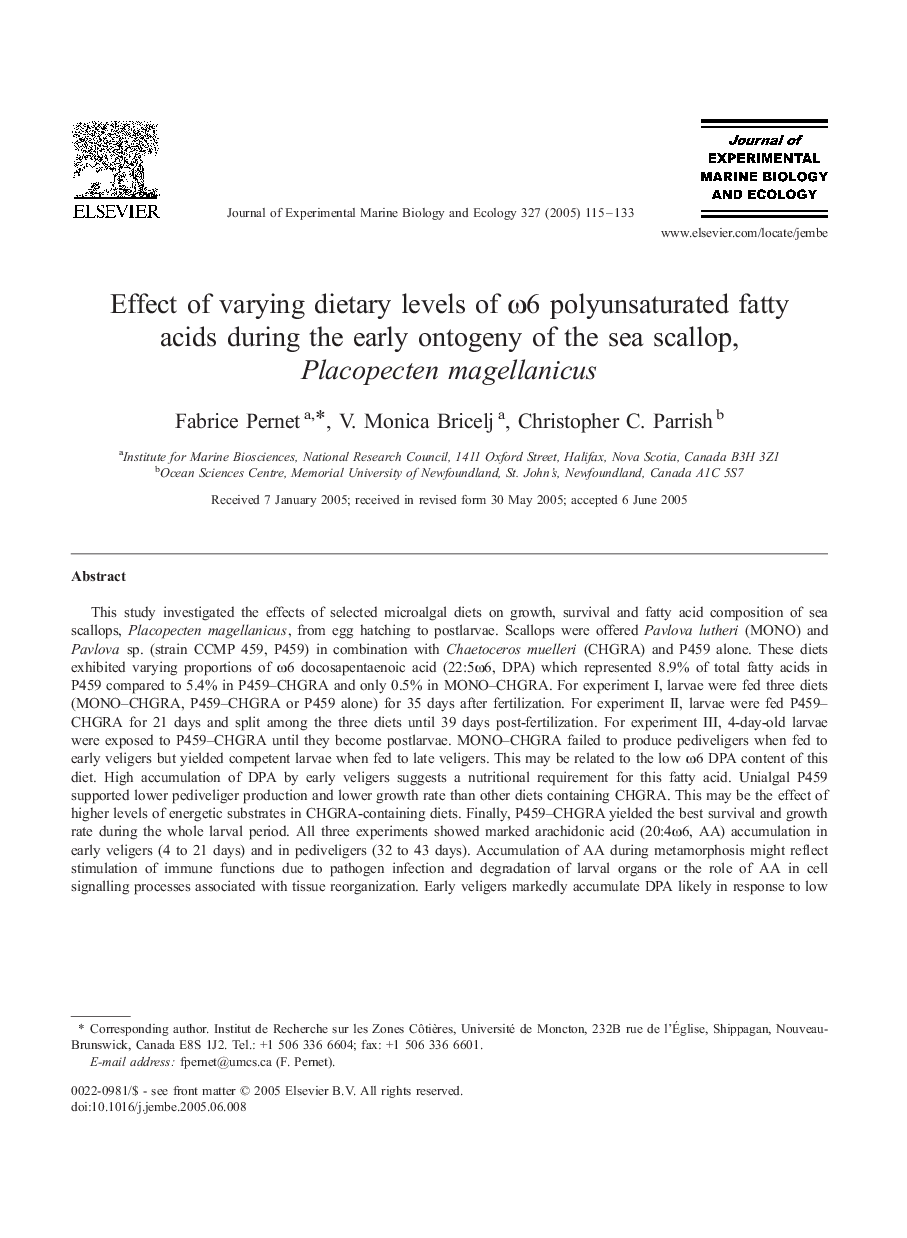| Article ID | Journal | Published Year | Pages | File Type |
|---|---|---|---|---|
| 9448633 | Journal of Experimental Marine Biology and Ecology | 2005 | 19 Pages |
Abstract
This study investigated the effects of selected microalgal diets on growth, survival and fatty acid composition of sea scallops, Placopecten magellanicus, from egg hatching to postlarvae. Scallops were offered Pavlova lutheri (MONO) and Pavlova sp. (strain CCMP 459, P459) in combination with Chaetoceros muelleri (CHGRA) and P459 alone. These diets exhibited varying proportions of Ï6 docosapentaenoic acid (22:5Ï6, DPA) which represented 8.9% of total fatty acids in P459 compared to 5.4% in P459-CHGRA and only 0.5% in MONO-CHGRA. For experiment I, larvae were fed three diets (MONO-CHGRA, P459-CHGRA or P459 alone) for 35 days after fertilization. For experiment II, larvae were fed P459-CHGRA for 21 days and split among the three diets until 39 days post-fertilization. For experiment III, 4-day-old larvae were exposed to P459-CHGRA until they become postlarvae. MONO-CHGRA failed to produce pediveligers when fed to early veligers but yielded competent larvae when fed to late veligers. This may be related to the low Ï6 DPA content of this diet. High accumulation of DPA by early veligers suggests a nutritional requirement for this fatty acid. Unialgal P459 supported lower pediveliger production and lower growth rate than other diets containing CHGRA. This may be the effect of higher levels of energetic substrates in CHGRA-containing diets. Finally, P459-CHGRA yielded the best survival and growth rate during the whole larval period. All three experiments showed marked arachidonic acid (20:4Ï6, AA) accumulation in early veligers (4 to 21 days) and in pediveligers (32 to 43 days). Accumulation of AA during metamorphosis might reflect stimulation of immune functions due to pathogen infection and degradation of larval organs or the role of AA in cell signalling processes associated with tissue reorganization. Early veligers markedly accumulate DPA likely in response to low docosahexaenoic acid (22:6Ï3, DHA) concentrations in the three tested diets. The potential role and effect of DPA as a substitute for DHA is discussed.
Related Topics
Life Sciences
Agricultural and Biological Sciences
Aquatic Science
Authors
Fabrice Pernet, V. Monica Bricelj, Christopher C. Parrish,
